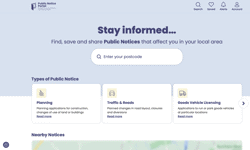Obviously most publishers’ online presence is an attempt to latch onto the widely publicised exodus of advertising revenue to the web. Unfortunately for many, these revenues have not been as forthcoming as would be favourable. Why?
It seems logical that if you can generate a significant amount of traffic, then revenue will naturally follow. Well, in my experience, this isn’t always the case and the principal culprit is the banner!
By ‘banner’ I don’t just mean the classic 468x60 pixel strip, but any permutation of display advertising you commonly find on the web.
From a revenue point of view, the common ‘cost per thousand’ approach to packaging display advertising has some intrinsic limitations. That being:
Number of pages you delivermultiplied byThe rate you can charge per thousand deliveredequalsRevenue
Because of the competition between sites to offer ‘eyeballs’ to advertisers and the increasing popularity of advertising networks that resell remnant inventory, the second part of this equation is very much in decline (for consumer and broad audience business sites this can be in the pence per thousand bracket and rarely exceeds £5!) Obviously that has a negative impact on your revenue. One way out is to increase your traffic or display more and more creative formats. But in a world where 10,000 hard won page impressions might only net you £50 it hardly seems worth the bother.
Alternatively you can run more and more different formats – welcome to Vegas!
So how can we change the equation and add value to the campaign?
The answer for us as publishers and for clients of our consultancy is engagement.
The idea of dwell time and user journeys has been around for a while and touted as a measure of engagement (and occasionally increased the asking price of a campaign). The engagement I refer to though is something far more profound and more tangible to advertisers. It’s the community effect.
Community interaction between your readers can bring three key benefits to your clients that you can attach real monetary value to.
First of all, understanding. Not only will readers divulge significant amounts of profile data to gain access to a community that offers them real value but you can also eavesdrop on their conversations. Demonstrating that readers are interested in a given topic (or turned off by another) can help modulate and target the campaign in way that would be impossible on a static brochure site.
Secondly, interaction. If your readers feel empowered to comment, blog and converse on your site then they are far more likely to engage with your advertisers. Your packages become far more interesting as banner campaigns are substituted for live discussion forums with real conversations taking place between advertisers and their potential customers. Once again real, monetisable value.
Thirdly – feedback. How much do your clients pay focus groups market researchers and PR firms? What if you can directly tap into those budgets by offering to carry out research on a given subject? This is another real and proven possibility if your site demonstrates the characteristics of community.
So – if you’re struggling to find the pot of gold at the end of the online rainbow, it’s worth looking deeper than just your sales team – it may be that your publishing model needs to change.










